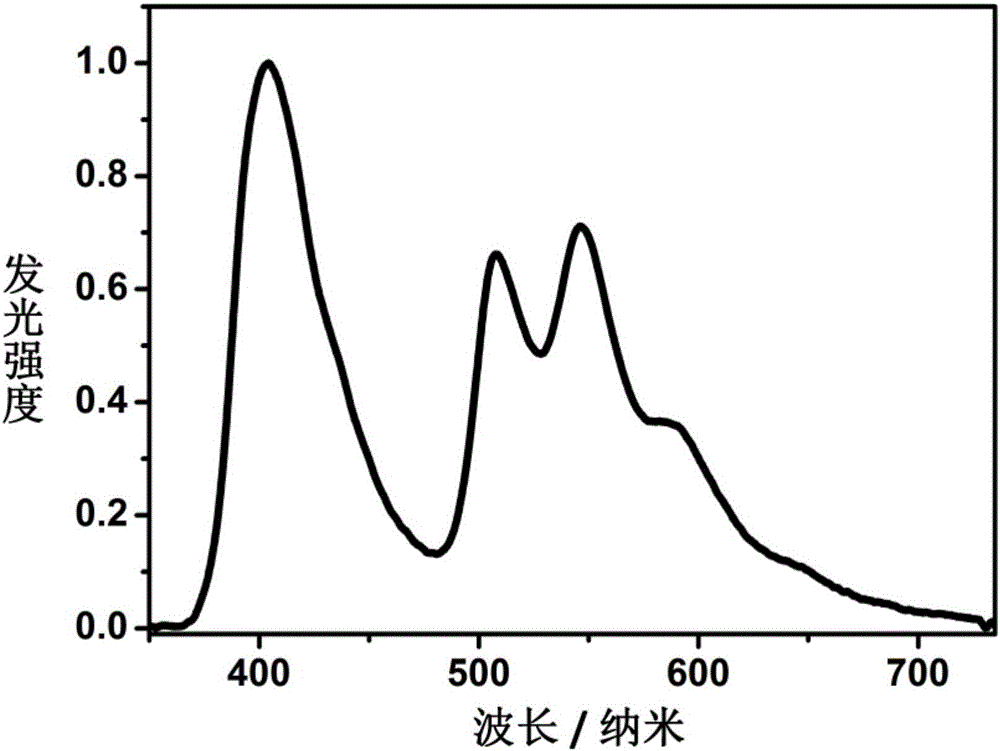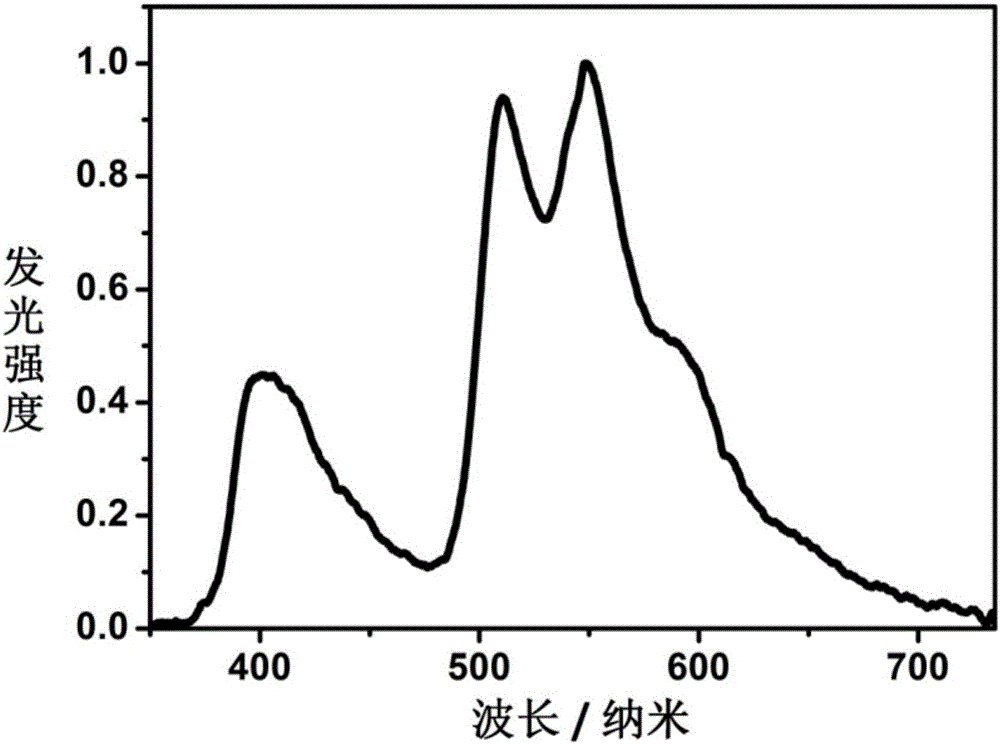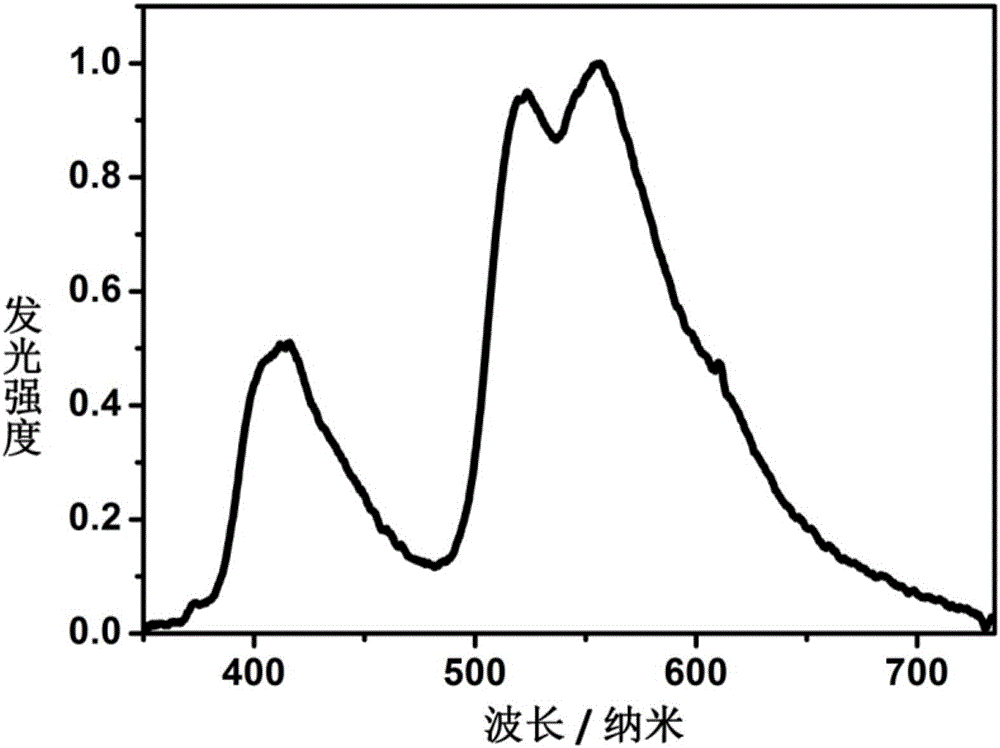Room temperature phosphorescent material based on phenyl-2-naphthylamine or phenyl-2-naphthylamine and 4,4-dibromodiphenyl composite crystal, and preparation method and application thereof
A dibromobiphenyl and room temperature phosphorescence technology, which is applied in the fields of organic white light materials, security and anti-counterfeiting identification, and organic room temperature phosphorescence light-emitting materials, can solve the problems of reduced room temperature phosphorescence emission, host-guest phase separation, difficult control of doping process, etc.
- Summary
- Abstract
- Description
- Claims
- Application Information
AI Technical Summary
Problems solved by technology
Method used
Image
Examples
Embodiment 1
[0023] Embodiment 1: Room temperature phosphorescence system of compound 1
[0024] Take 10 mg of compound 1 and 1 g of 4,4-dibromobiphenyl into a single-necked bottle, then add 100 mL of dichloromethane to dissolve, shake well, use a rotary evaporator to distill off the dichloromethane under reduced pressure, and distill the obtained solid powder Dry in a vacuum oven at 40°C. The obtained solid powder was placed in the air, and exhibited white light emission under the irradiation of an ultraviolet lamp, the lifetime of phosphorescence was 173 ms, and the quantum yield of phosphorescence was 17%.
Embodiment 2
[0025] Embodiment 2: the room temperature phosphorescence system of compound 5
[0026] Take 10 mg of compound 5 and 1 g of 4,4-dibromobiphenyl into a single-necked bottle, then add 100 mL of dichloromethane to dissolve, shake well, use a rotary evaporator to distill off the dichloromethane under reduced pressure, and distill the obtained solid powder Dry in a vacuum oven at 50°C. The obtained solid powder was placed in the air, and showed yellow-green emission under the irradiation of ultraviolet light (because the relative intensity of the spectrum is different, so this material emits greenish light), the lifetime of phosphorescence is 68.1ms, and the quantum yield of phosphorescence is 14%.
Embodiment 3
[0027] Embodiment 3: the room temperature phosphorescent system of compound 6
[0028] Take 10 mg of compound 6 and 1 g of 4,4-dibromobiphenyl into a single-necked bottle, then add 100 mL of dichloromethane to dissolve, shake well, use a rotary evaporator to distill off the dichloromethane under reduced pressure, and distill the obtained solid powder Dry in a vacuum oven at 50°C. The obtained solid powder is placed in air, and under the irradiation of ultraviolet light, it presents yellow-green light emission (because the relative intensity of the spectrum is different, so this material emits greenish light), the lifetime of phosphorescence is 7.34ms, and the phosphorescence quantum yield is 22%.
PUM
 Login to View More
Login to View More Abstract
Description
Claims
Application Information
 Login to View More
Login to View More - R&D
- Intellectual Property
- Life Sciences
- Materials
- Tech Scout
- Unparalleled Data Quality
- Higher Quality Content
- 60% Fewer Hallucinations
Browse by: Latest US Patents, China's latest patents, Technical Efficacy Thesaurus, Application Domain, Technology Topic, Popular Technical Reports.
© 2025 PatSnap. All rights reserved.Legal|Privacy policy|Modern Slavery Act Transparency Statement|Sitemap|About US| Contact US: help@patsnap.com



